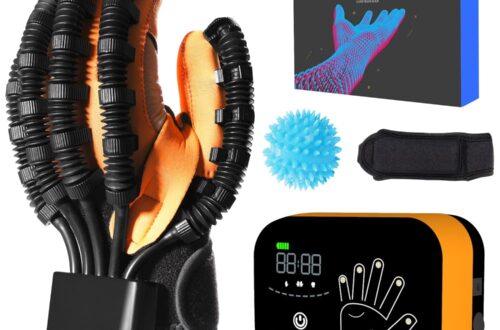Strokes are usually seen as sudden and severe medical emergencies. However, they can also show up in more subtle ways, especially in women. Understanding these signs is crucial for getting timely medical help, which can greatly improve outcomes. This guide will help you recognize mild stroke symptoms in women and stress the importance of quick action.
Identifying a Stroke: The FAST Method
Recognizing the symptoms of a stroke can save lives. Use the FAST method to quickly identify if someone is having a stroke.
Face: The American Heart Association’s Advice
- Symptom: Ask the person to smile.
- Check For: Does one side of the face droop? According to the American Heart Association, a drooping face is a key indicator of a stroke. Look for unevenness or a lopsided smile, which can indicate muscle weakness.
Arms: Detecting Arm Weakness
- Symptom: Ask the person to raise both arms.
- Check For: Does one arm drift downward? Notice if one arm is unable to stay up or feels significantly weaker than the other. Arm weakness is a common symptom of a stroke, often indicating a problem with blood flow to the brain.
Speech: Recognizing Speech Problems
- Symptom: Ask the person to repeat a simple phrase.
- Check For: Is their speech slurred or strange? Listen for difficulty in speaking clearly, mixing up words, or inability to understand simple phrases. Speech problems are a critical sign of a stroke and require immediate attention.
Time: The Importance of Quick Action
- Action: If you see any of these signs, call emergency services immediately.
- Reason: Time is critical in treating a stroke. The faster you get help, the better the chances of recovery and minimizing long-term effects. The American Heart Association emphasizes the importance of quick medical intervention to restore normal blood flow.
Understanding Stroke Symptoms and Blood Clots
Sudden Confusion:
- Symptom: Difficulty in understanding instructions, remembering familiar routes, or managing daily activities.
- Check For: Look for signs such as getting lost in familiar places, trouble following simple commands, or a noticeable change in the ability to manage routine tasks. Sudden confusion often results from a blood clot disrupting blood flow to the brain.
Speech Problems:
- Symptom: Slurred speech or trouble forming words and sentences.
- Check For: Pay attention to speech that is hard to understand, jumbled sentences, or an inability to articulate words correctly. Speech problems are often linked to blood clots affecting areas of the brain responsible for language.
Weakness or Numbness:
- Symptom: Sudden weakness or numbness in the face, arm, or leg, especially on one side of the body.
- Check For: Check if the person cannot lift one arm fully, if one side of their face appears to droop, or if they report a tingling sensation in the affected limbs. Arm weakness, in particular, can signal a stroke caused by a blockage in blood flow.
Vision Changes:
- Symptom: Blurred vision, double vision, or sudden loss of sight in one or both eyes.
- Check For: Ask if the person is experiencing any vision disturbances such as seeing double, having blind spots, or a sudden inability to see clearly. Vision changes are often related to a blood clot affecting the optic nerve or visual cortex.
Severe Headache:
- Symptom: A sudden, severe headache that feels different from any previous headaches.
- Check For: Be alert for complaints of an intense headache that comes on suddenly and is unlike any previous headaches the person has had. Severe headaches can indicate a disruption in blood flow or a hemorrhage in the brain.
Balance Issues:
- Symptom: Dizziness, loss of balance, or trouble walking.
- Check For: Watch for unsteadiness, difficulty in walking straight, or a sensation that the room is spinning, causing the person to stumble or fall. Balance issues can result from impaired blood flow to areas of the brain responsible for coordination.
The Role of Blood Flow in Stroke Recovery
Maintaining proper blood flow is crucial for preventing strokes and aiding recovery. Blood clots can obstruct blood flow to the brain, leading to severe complications. Treatments that dissolve clots or improve blood flow are essential for stroke recovery. The American Heart Association recommends lifestyle changes, medications, and sometimes surgical interventions to manage blood flow and prevent further strokes.
Heart Disease, Men and Women, and Ischemic Stroke
Heart disease significantly increases the risk of ischemic stroke, which is the most common type of stroke caused by a blood clot blocking blood flow to the brain. Both men and women are affected by ischemic strokes, though symptoms and recovery can vary between genders. Men may experience more typical symptoms like arm weakness, while women might have subtler signs such as sudden confusion or severe headache. Understanding the relationship between heart disease and stroke risk is vital for both men and women to take preventive measures and seek timely medical help.
By understanding these symptoms and taking immediate action, you can help ensure better outcomes for stroke patients. Always remember to use the FAST method and seek emergency medical help if you suspect a stroke.

Early Treatment
Early treatment for a stroke is crucial. Treatments like clot-busting drugs are most effective when given soon after symptoms start. This is why responding quickly to mild stroke symptoms is so important.
Raising Awareness
Educating women about mild stroke symptoms is vital. Awareness campaigns and educational programs can help women recognize the signs and seek prompt medical help.
Conclusion
Recognizing mild stroke symptoms in women can truly save lives. Acting quickly not only helps in recovery but can also prevent long-term damage. By spreading awareness and educating others, we can ensure women receive the timely treatment they need. Together, we can make a significant difference in stroke outcomes and support women in their recovery journey.
FAQs about Mild Stroke Symptoms in Women
Q1: What is a mild stroke? A: A mild stroke, also known as a transient ischemic attack (TIA), is a temporary period of symptoms similar to those of a stroke. It usually lasts only a few minutes and doesn’t cause permanent damage. However, it is a warning sign that a more severe stroke could occur in the future.
Q2: What are the common symptoms of a mild stroke in women? A: Symptoms can be subtle and easily overlooked. They include:
- Sudden confusion or trouble understanding things
- Difficulty speaking or slurred speech
- Sudden numbness or weakness in the face, arm, or leg, especially on one side of the body
- Changes in vision, such as blurred or double vision
- Severe headache with no known cause
- Dizziness, loss of balance, or trouble walking
Q3: Why is it important to recognize these symptoms early? A: Recognizing and responding to these symptoms quickly can significantly impact recovery. Early medical intervention can prevent further damage and improve the chances of a full recovery.
Q4: What should I do if I suspect someone is having a mild stroke? A: If you notice any signs of a stroke, act FAST:
- Face: Ask the person to smile. Does one side of the face droop?
- Arms: Ask the person to raise both arms. Does one arm drift downward?
- Speech: Ask the person to repeat a simple phrase. Is their speech slurred or strange?
- Time: If you see any of these signs, call emergency services immediately. Time is critical in treating a stroke.
Q5: What treatments are available for mild strokes? A: Treatment often involves medications to dissolve clots, prevent new clots from forming, and manage other risk factors. In some cases, surgical procedures may be needed to open blocked arteries. The key is to seek treatment as soon as symptoms appear.
Q6: How can I reduce my risk of having a stroke? A: Lifestyle changes such as maintaining a healthy diet, exercising regularly, avoiding smoking, and managing conditions like high blood pressure, diabetes, and high cholesterol can help reduce the risk of stroke.
Q7: Why are awareness and education important for stroke prevention? A: Educating women about the subtle signs of a mild stroke can lead to quicker recognition and response, ultimately saving lives and reducing the long-term impact of strokes. Awareness campaigns and educational programs can empower women to take action and seek medical help promptly.
By understanding these signs and knowing when to seek immediate medical help, we can improve stroke treatment and recovery outcomes for women. If you have more questions or need support, don’t hesitate to reach out to healthcare professionals. Your health is your most valuable asset—protect it with knowledge and prompt action.





